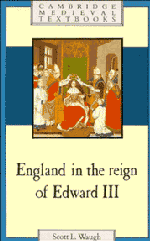Book contents
- Frontmatter
- Contents
- List of figures and tables
- Acknowledgements
- Map 1 Towns and villages mentioned in Chapters 3–6
- Map 2 Ecclesiastical sites mentioned in Chapter 9
- Part I Overview
- Part II Economic challenges
- 3 The peasant family and village society
- 4 Markets and towns
- 5 Overseas trade: wool and taxes
- 6 Economic change
- 7 The landlords' response
- Part III Government and communities
- Part IV Politics
- Glossary
- Bibliography
- Index
3 - The peasant family and village society
Published online by Cambridge University Press: 05 June 2012
- Frontmatter
- Contents
- List of figures and tables
- Acknowledgements
- Map 1 Towns and villages mentioned in Chapters 3–6
- Map 2 Ecclesiastical sites mentioned in Chapter 9
- Part I Overview
- Part II Economic challenges
- 3 The peasant family and village society
- 4 Markets and towns
- 5 Overseas trade: wool and taxes
- 6 Economic change
- 7 The landlords' response
- Part III Government and communities
- Part IV Politics
- Glossary
- Bibliography
- Index
Summary
It is important to begin with the fundamental units of agricultural production and consumption: the peasant family and village community. England was, and is, characterized by the diversity of its geography, soil, and weather. Over natural variations, humans imposed the diversification of settlement and practices. The patterns of habitation tended to follow the geography: from the scattered hamlets and sparse population of the uplands and woodlands to the nucleated villages of the midlands and the dense communities of the east coast. In all, agriculture was a communal venture, though the degree and precise nature of co-operation differed. Villagers' customs were as varied as village plans. On top of these cultural differences, power imposed further distinctions, demarcating one lordship or jurisdiction from another, even within a single village. The crown and church drew additional boundaries to organize their own functions and dues.
Individuals were differentiated economically and legally. Medieval people had traditionally classified themselves according to their functions in the well-known concept of the three orders: those who work, those who fight, and those who pray. The scheme came into use around the year 1000 but it was still alive in the fourteenth century. Thus, William Langland could have his ploughman proclaim that ‘for my part I'll sweat and toil for us both [himself and the knight] as long as I live, and gladly do any job you want. But you must promise in return to guard over Holy Church, and protect me from thieves and wasters who ruin the world.‘
- Type
- Chapter
- Information
- England in the Reign of Edward III , pp. 23 - 39Publisher: Cambridge University PressPrint publication year: 1991

